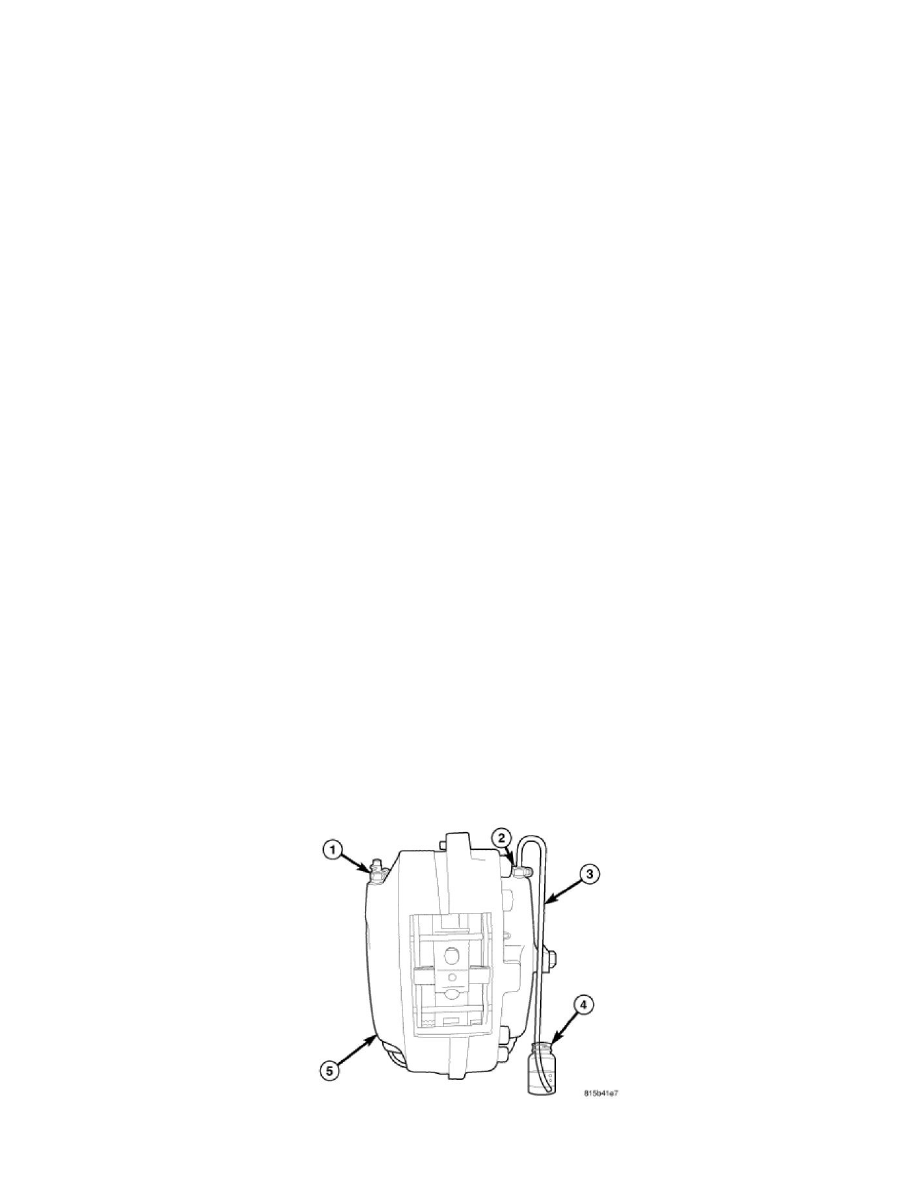Viper SRT-10 V10-8.4L (2008)

Brake Bleeding: Service and Repair
Base Brake Bleeding
BASE BRAKE BLEEDING
CAUTION: Before removing the master cylinder cover, wipe it clean to prevent dirt and other foreign matter from dropping into the master
cylinder.
CAUTION: Use Mopar(R) Brake & Clutch Fluid DOT 4 Motor Vehicle or equivalent from a fresh, tightly sealed container.
NOTE: For bleeding the antilock brake hydraulic system,
NOTE: Do not pump the brake pedal at any time while having a bleeder screw open during the bleeding process. This will only increase the
amount of air in the system and make additional bleeding necessary.
NOTE: Do not allow the master cylinder reservoir to run out of brake fluid while bleeding the system. An empty reservoir will allow additional
air into the brake system. Check the fluid level frequently and add fluid as needed.
NOTE: The following wheel circuit sequence for bleeding the brake hydraulic system should be used to ensure adequate removal of all trapped
air from the brake hydraulic system.
-
Right rear wheel
-
Left rear wheel
-
Right front wheel
-
Left front wheel
NOTE: Pressure bleeding is highly recommended to bleed this brake system to ensure all air is removed from system. Manual bleeding may
also be used, but additional time is needed to remove all air from system.
Although it is recommended that the base brake system be bled using the pressure method, the manual method can also be performed. Both methods are
presented in this text.
PRESSURE BLEEDING METHOD
NOTE: Follow pressure bleeder manufacturer's instructions for use of pressure bleeding equipment.
NOTE: Before removing the master cylinder filler cap, wipe it clean to prevent dirt and other foreign matter from dropping into the master
cylinder.
1. Remove filler cap from the top of fluid reservoir on master cylinder.
2. Install Adapter, Special Tool 6921, in the caps place on the reservoir.
3. Attach Bleeder Tank, Special Tool C-3496-B, or equivalent, to Adapter 6921. Pressurize the system following the pressure bleeder manufacturer's
instructions.
NOTE: When bleeding the brakes it is necessary that both halves of the caliper assembly be bled individually. This procedure should be
followed to ensure adequate bleeding.
4. If installed, remove rubber dust caps from both bleeder screws on each caliper.
5. Starting at the first wheel circuit that needs to be bled (See sequence in above note), attach a clear hose (3) to the inboard bleeder screw (2) at that
